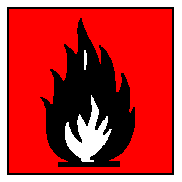International Chemical Safety Cards
| STODDARD SOLVENT | ICSC: 0361 |
STODDARD SOLVENT |
 |
| TYPES OF HAZARD/ EXPOSURE |
ACUTE HAZARDS/ SYMPTOMS |
PREVENTION | FIRST AID/ FIRE FIGHTING |
| FIRE | Flammable. |
NO open flames, NO sparks, and
NO smoking. |
Powder, AFFF, foam, carbon
dioxide. |
| EXPLOSION | Above 38°C explosive vapour/air
mixtures may be formed. |
Above 38°C use a closed system,
ventilation, and explosion-proof electrical equipment. |
In case of fire: keep drums,
etc., cool by spraying with water. |
| EXPOSURE | |
|
|
| INHALATION | Confusion. Dizziness.
Headache. Fatigue. Nausea. Unconsciousness. |
Ventilation, local exhaust, or
breathing protection. |
Fresh air, rest. Artificial
respiration if indicated. Refer for medical attention. |
| SKIN | Dry skin. |
Protective gloves. Protective
clothing. |
Remove contaminated clothes.
Rinse and then wash skin with water and soap. |
| EYES | Redness. |
Safety spectacles. |
First rinse with plenty of water
for several minutes (remove contact lenses if easily possible), then take to a doctor. |
| INGESTION | Cough. Diarrhoea. Dizziness.
Drowsiness. Headache. Nausea. Sore throat. Vomiting. |
Do not eat, drink, or smoke
during work. |
Do NOT induce vomiting. Refer
for medical attention. |
| SPILLAGE DISPOSAL | STORAGE | PACKAGING & LABELLING | ||
| Collect leaking and spilled
liquid in sealable containers as far as possible. Absorb remaining liquid in sand or inert
absorbent and remove to safe place. |
Fireproof. Separated from strong
oxidants. |
F symbol R: 10 UN Hazard Class: 3 UN Packing Group: III |
||
| SEE IMPORTANT INFORMATION ON BACK | ||||
|
||||